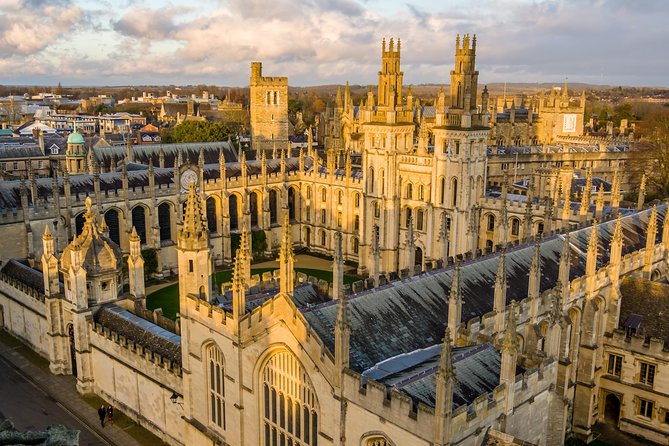Where is Oxford University
Oxford University is the oldest university in the English-speaking world. Established 1096 in the historic city of Oxford, England, United Kingdom, Oxford University has gained sustained academic excellence for more than nine centuries. If you wonder where is Oxford University, it is located right in the center of the Oxford, the city, which is quite old and peculiar from a historic streets, museums, and libraries. Oxford has no single central campus. Colleges, libraries, lecture halls and admin buildings are spatially distributed throughout the city. As a result the students of Oxford University enjoy the unique experience of engaging in advanced scholarship in the company of historical import.
Get the Maximum Chance to get into Oxford.

Oxford University England Details
- Full Name: University of Oxford
- Location: Oxford, England, United Kingdom
- Founded: c. 1096 (one of the oldest universities in the English-speaking world)
- Type: Collegiate research university
- Colleges: 43 constituent colleges (36 semi-autonomous colleges, 4 permanent private halls, 3 societies)
- Campus: No single main campus; university buildings are distributed throughout the city.
- Famous For: Academic excellence, tutorial system, research contributions, historic architecture.
- Notable Alumni: 31 UK Prime Ministers, 73 Nobel laureates, 160 Olympic medalists, other prominent leaders around the globe.
- Facilities: Bodleian Library, Ashmolean Museum, Radcliffe Camera, Oxford University Press.
- Reputation: Among the top universities in the world, particularly strong in the humanities, sciences, and social sciences.
Oxford University consists of 43 constituent colleges comprising 36 semi-autonomous colleges, four permanent private halls, and three societies. Each college operates as a separate administrative unit, possessing its own facilities and community. All students at Oxford University are affiliated with a college, which offers housing, meals, tutorials, and various social activities. For those wondering about the location of Oxford University, awareness of its city-wide structure aids students in orientation and appreciation of its distinctive collegiate system. This system stands out to most other leading universities around the globe, as it combines the promises of individualized instruction with the richness of a communal academic experience.
The Oxford University educational framework lies in Medicine, Humanities and Social Sciences, Mathematical, Physical and Life Sciences, and Social Sciences. Lectures and small-group tutorials are extensions of your undergraduate education teaching, wherein students contrastingly focus and work with tutors. Most of the time, department and college centers are the focus of postgraduate education, which is usually centralized. Having the largest and one of the oldest European libraries, the Bodleian, the Ashmolean (the world’s first university museum), and Oxford University Press (the biggest university press in the world), the University of Oxford has world-class and unique resources. Knowing where Oxford University is located, prospective students can plan a campus visit and use the city’s historical and scholastic resources.
Oxford University educates students from all over the world. The alumni of Oxford University include 31 British prime ministers, more than 73 Nobel Prize winners, 4 winners of the Fields Medal, 6 winners of the Turing Award, and more than 160 Olympic medalists. Oxford has educated or employed luminaries like John Locke, Lewis Carroll, and Robert Hooke and has starred in the intellectual achievement of every era. The politics, science, literature, and business of the world are shaped by the modern alumni of Oxford. For those looking to study at Oxford the vibrant city and collegiate life Oxford has to offer is an essential part of knowing where is Oxford University. Outside of the classroom Oxford University students have many clubs, societies, sports teams, and music and drama. Oxford University accommodates students and feeds them in halls are like modern Christ Church and Great Hall. The halls are really Great in social and historic ways. Oxford University students have well arranged systems of mental and emotional health, academic and career guidance. Formal traditions like dinners and ceremonies, and modern life of the student are attested to by the rich traditions of the University. The University of Oxford merges these activities with traditions of several centuries to enrich the modern experience of the student.
Oxford University issues far-reaching ramifications. The scholarly output, especially in the faculties of medicine, science, and the humanities, has been a cornerstone in the establishment of contemporary scholarship and policy. International students are enabled to study at Oxford through initiatives like the Rhodes Scholarship, thus reconfirming the university’s position as a global academic leader. The city of Oxford, with its historical and architectural gems, is enriched with wharves, museums, and a variety of cultural facilities, making it undeniably a significant city for intellectual exploration and ensuring visitors to study at the university know precisely where it is located. In conclusion, Oxford University is a major scholarly establishment and a historical place of innovation. The unique collegiate system, historic buildings, and dedication to scholarly attainment systematically incorporate the greatest global thinkers. To study at Oxford University is to experience unparalleled scholarly educations, rich educational traditions, a thriving scholarly environment, and world-class intellects, formed and embraced by the integrated university system. In addition, the city of Oxford gives a contemporary academic and cultural society. For anyone to embark on a scholarly journey, knowing where is Oxford University marked with a rich educational heritage is the appropriate starting point.
Need more information about Oxford University about courses, Admission, Deadline, scholarships, Visit Our Web Home page WhatsOxford
